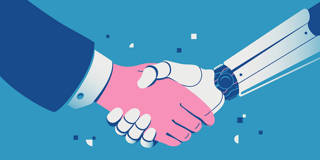Maxims for the AI Age
Far too often, debates about technology, innovation, and progress fall into crude dichotomies – humans versus machines, utopia versus dystopia – that distract from the matter at hand. Rather than fixating on extremes, we should adopt a more nuanced and historically informed view of our tools, and of ourselves.

PERUGIA – Debates about technology have increasingly been reduced to stark dichotomies. Artificial intelligence should be curtailed, or it should be accelerated: thesis and antithesis, but no synthesis. Rather than picking a side, we should consider alternative rallying cries that place the focus where it belongs: humanity.